Local govt finances: You can run DMC, but you can’t hide from paper tiger budgets
Rs3.7b announced for Saddar, Lyari, Keamari .
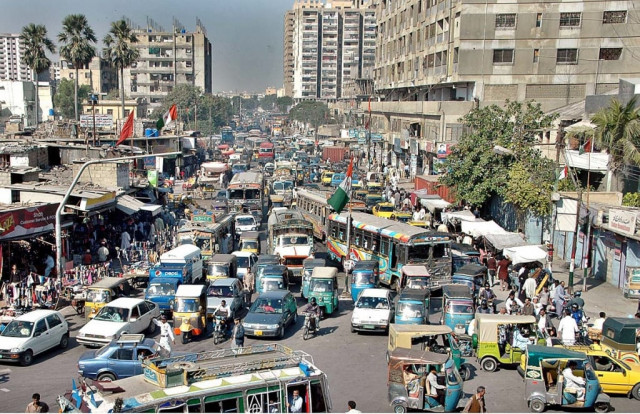
Local govt finances: You can run DMC, but you can’t hide from paper tiger budgets
The bureaucrat who manages Saddar, Lyari and Keamari is willing to share the budget they have prepared for 2014-15-but says it’s pretty useless as a document because they don’t have the money and won’t get it over the course of the year.
“I don’t have my receipts [or revenue] and they expect me to prepare a budget document,” says Afzal Zaidi, the District Municipal Corporation administrator for Karachi’s South. He laughs then: “I said I can make it based on historical experience.” Just take the old numbers and increase them 10% or something.

Zaidi is an unusual bureaucrat; he is frighteningly candid about the financial state of affairs. He explains that in essence, DMC South has prepared a Rs3.7 billion budget but the reality is that is doesn’t earn enough to keep providing municipal services such as garbage collection, road repairs, street lights. The DMCs-Karachi is divided into six: Malir, Central, East, South, West and Korangi-are essentially a tier of local government that comes under the umbrella of the Karachi Metropolitan Corporation.
This is why DMCs rely on 90% of their budget to come from KMC or the Sindh government. “[But] what is mine, I am not getting,” says Zaidi. “It’s stereotypical over here,” he adds, referring to how they do the accounting. “[They say] write this [amount] down for this [randomly]. There isn’t any working [on whether it is actually feasible].”

Zaidi gives the example of a tall half-finished DMC complex they have been building right next to his office off II Chundrigar Road. The idea was to bring all DMC offices under one roof as they are scattered across Karachi. During construction the money ran out and it’s been standing there for ages. “I was told, dhai crore rakh lo is ke lye, if the money comes in, then finish it.”
Last year, for example, KMC and the Sindh government gave DMC South Rs2.3 billion after promising Rs3.2 billion. The DMC only earned Rs248 million or 6% of its budget on its own. This year the figures are much the same (see table). The DMC expects to receive or earn a total of Rs3.7 billion. But after at least one quarter it will revise these figures down because the money just won’t be forthcoming.

The impact of this was first felt on development last year. When the DMC didn’t make enough money, the Rs490 million development budget was first to be axed down to Rs127 million.
A DMC will earn revenue through three key streams: KMC or the Sindh government in handouts, property taxes, and the small fees and charges it can levy.
Its biggest drain is salaries. DMC South has about 5,300 staffers (see box) and their salaries cost Rs 109 million a month. The DMC used to be able to pay this money out of its share of the octroi and zilla tax but that hasn’t been increased the usual 20% yearly since 2011. Now the DMC only gets Rs102 million and that barely covers the salaries. “We wouldn’t be in such a deep quagmire if the share had been increased,” adds Zaidi.

The DMC’s other main expense is petrol for its garbage trucks to the landfill. “It’s a major liability,” says Zaidi. “The garbage trucks are constantly moving.” The DMC only manages to pay its petrol pump bill every three months because that is when it receives its share of the property taxes from its jurisdiction.
The property taxes are collected by the excise and taxation department that hands it over to the KMC. KMC takes its cut and passes on 60% to the DMC. “My reservation as an administrator is that the task should be taken away from the E&T and assigned to the DMC itself,” argues Zaidi. They should be collecting the property tax daily, which would vastly improve their financial position. He argues that they would also do a better job of collecting this tax because they have so much at stake.
(No property tax is levied in Lyari as the plots are exempted because of their size).
The other ways the DMC can make a bit of money on the side are by charging fees for wedding halls, plant nurseries on its turf, or say the transfer of property on which it earns 1%. It also charges a fixed Rs180,000 a year if a shop or bank wants to place a generator outside.
Either way, these models of financial management don’t work, and the DMC just can’t do its job properly. “We just aren’t taxing enough,” says Zaidi. “The government has utterly failed. Go and look at any alleyway or street in the VIP areas [or any part of District South]. I can’t lie to myself.”
Published in The Express Tribune, July 15th, 2014.

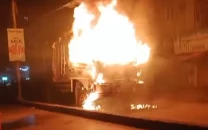
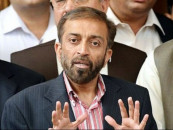
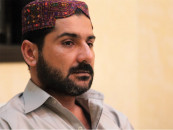
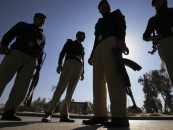





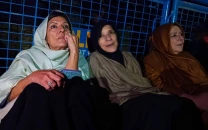







COMMENTS
Comments are moderated and generally will be posted if they are on-topic and not abusive.
For more information, please see our Comments FAQ